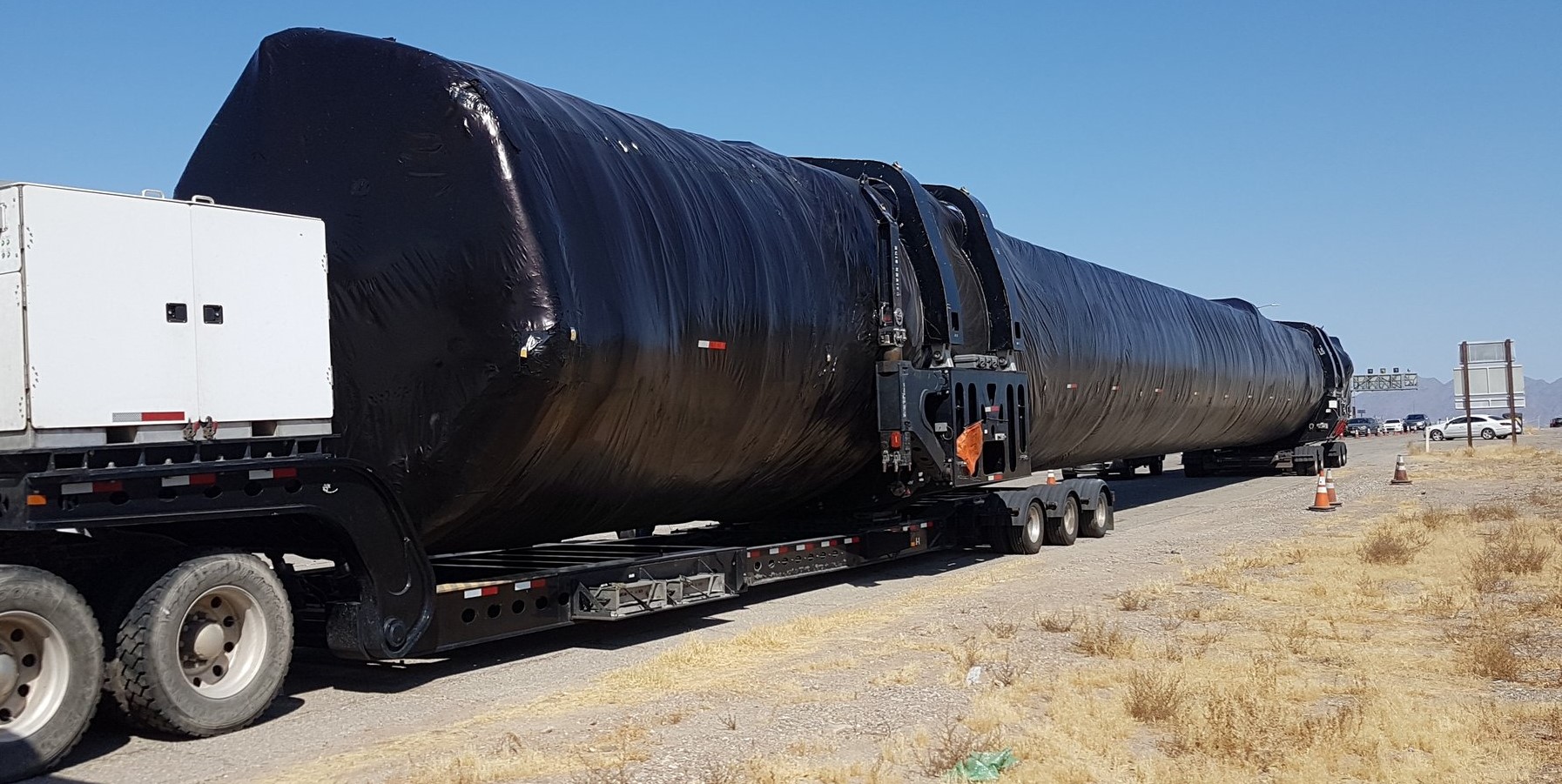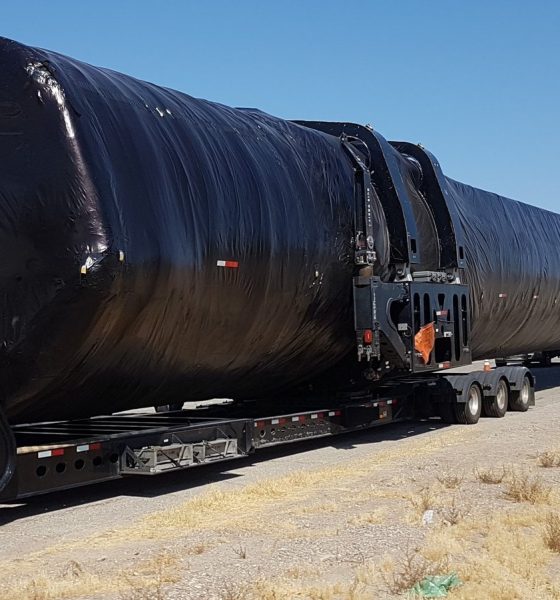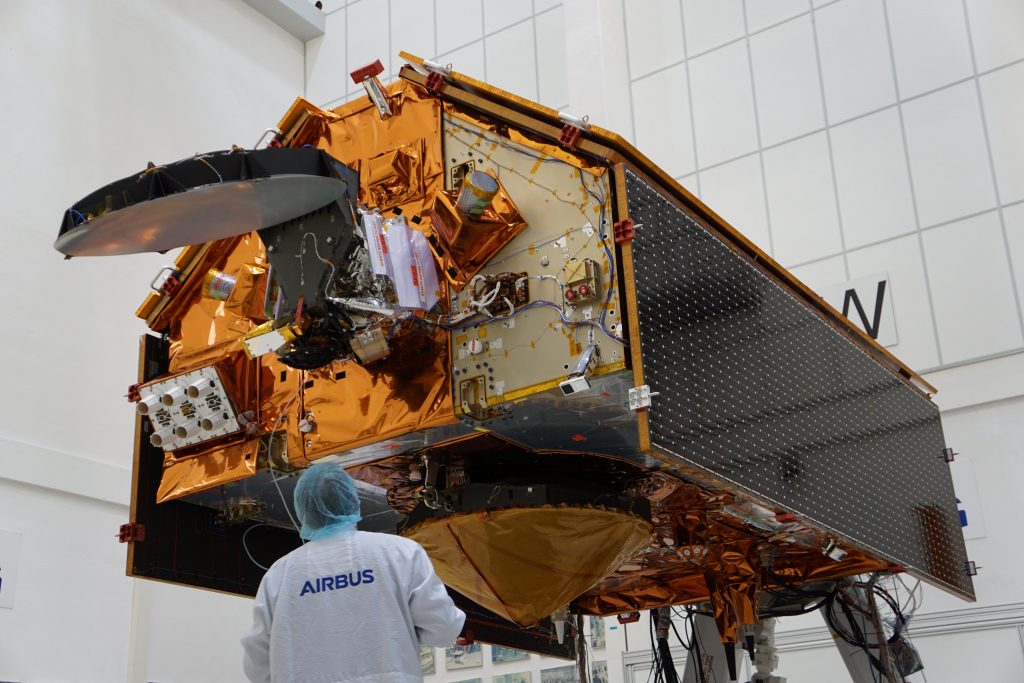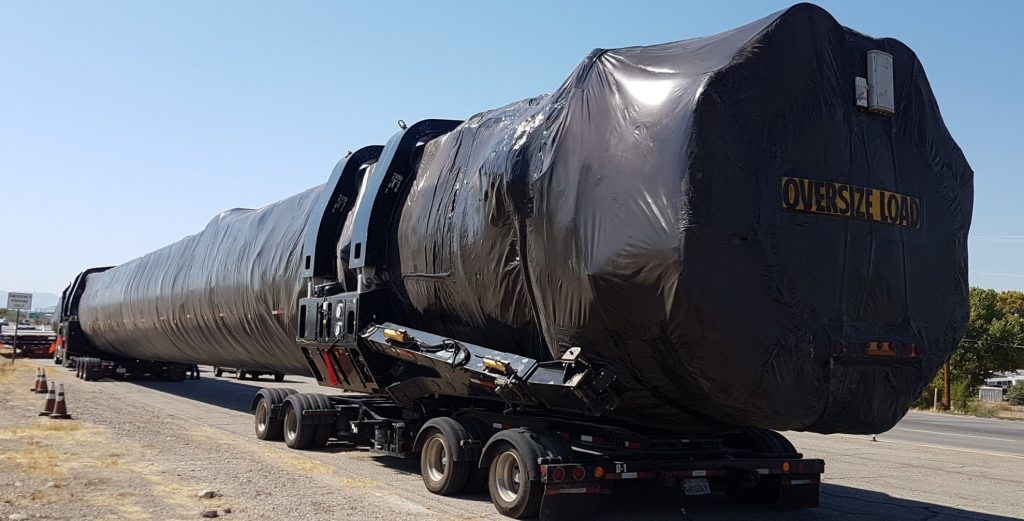

News
SpaceX has a California launch date for the first time in 16 months
Just over a week after a Falcon 9 booster was spotted heading west, NASA has confirmed the date for SpaceX’s first California launch in more than 16 months.
Spotted in Texas on August 20th, Arizona on August 23rd, and at the entrance to Vandenberg Air Force Base (VAFB) on August 24th, the SpaceX rocket is almost certainly Falcon 9 booster B1063 or B1064. Regardless, it – alongside an expendable upper stage and (likely also expendable) payload fairing – will be flying for the first time on a fairly unique mission cosponsored by NASA.
Known as Sentinel-6A or Sentinel-6 Michael Freilich, after the late scientist and NASA director responsible for bringing several major Earth science missions to fruition, the 1500 kg (3300 lb) Airbus-built satellite is designed to measure ocean height and analyze the Earth’s atmosphere almost anywhere on Earth.

As previously discussed on Teslarati, the SpaceX booster spotted heading west late last month was almost certainly meant for Sentinel-6A.
NASA awarded SpaceX the $97 million launch contract in 2017, all but guaranteeing that Sentinel 6A will fly on a brand new Falcon 9 booster. The fact that the booster spotted in transport over the last week was never seen East of Texas strongly implies that it’s a new Falcon 9 SpaceX tested in McGregor before shipping back to California, in which case Sentinel 6A is almost certainly SpaceX’s next VAFB launch.
In the likely event that the booster that arrived at VAFB on August 24th is unflown, it’s probably Falcon 9 B1063. Germany’s SARah-1 radar imaging satellite is possibly the only other West Coast launch on SpaceX’s manifest that could warrant sending a new booster to California, but recent signs point towards that ~2200 kg (4850 lb) spacecraft launching in Q1 2021 (a delay from Q4 2020) as part of a dedicated SpaceX rideshare mission.
Less likely, SARah-1 could have been manifested on SpaceX’s first dedicated rideshare mission, scheduled to launch in December 2020. Either way, as fairly complex and expensive one-off science spacecraft, both SARah-1 and Sentinel 6A are liable to slip right from their current launch targets, meaning that Falcon 9 B1063 will likely spend at least 2-3 months in storage between now and the start of its first launch flow.
Teslarati.com — August 25th, 2020
Now, just three days after SpaceX successfully completed the first East Coast polar launch in half a century, NASA has already unexpectedly revealed that SpaceX’s first dedicated rideshare mission – mentioned above and now deemed Transporter-1 – is still on track to launch in December 2020. However, SpaceX has moved the launch from California to Florida, killing the possibility that the new booster now at SpaceX’s Vandenberg launch facilities was meant for SARah-1.

The very next day, NASA’s Launch Services Program (LSP) office revealed that Sentinel-6A is officially targeting an 11:45am PDT (UTC-7), November 10th, 2020 launch on Falcon 9. Aside from giving SpaceX its first firm Vandenberg Air Force Base (VAFB) launch date since June 2019, the NASA update also revealed that the mission hasn’t slipped a single day after more than two months of reviews.
Due to the fact both of SpaceX’s operational drone ships are currently stationed in Florida, Sentinel-6A will include a guaranteed Falcon 9 booster landing back at Landing Zone-4, situated just a thousand feet or so away from the SLC-4E launch pad.
Check out Teslarati’s Marketplace! We offer Tesla accessories, including for the Tesla Cybertruck and Tesla Model 3.

Elon Musk
Elon Musk and Tesla AI Director share insights after empty driver seat Robotaxi rides
The executives’ unoccupied tests hint at the rapid progress of Tesla’s unsupervised Robotaxi efforts.

Tesla CEO Elon Musk and AI Director Ashok Elluswamy celebrated Christmas Eve by sharing personal experiences with Robotaxi vehicles that had no safety monitor or occupant in the driver’s seat. Musk described the system’s “perfect driving” around Austin, while Elluswamy posted video from the back seat, calling it “an amazing experience.”
The executives’ unoccupied tests hint at the rapid progress of Tesla’s unsupervised Robotaxi efforts.
Elon and Ashok’s firsthand Robotaxi insights
Prior to Musk and the Tesla AI Director’s posts, sightings of unmanned Teslas navigating public roads were widely shared on social media. One such vehicle was spotted in Austin, Texas, which Elon Musk acknowleged by stating that “Testing is underway with no occupants in the car.”
Based on his Christmas Eve post, Musk seemed to have tested an unmanned Tesla himself. “A Tesla with no safety monitor in the car and me sitting in the passenger seat took me all around Austin on Sunday with perfect driving,” Musk wrote in his post.
Elluswamy responded with a 2-minute video showing himself in the rear of an unmanned Tesla. The video featured the vehicle’s empty front seats, as well as its smooth handling through real-world traffic. He captioned his video with the words, “It’s an amazing experience!”
Towards Unsupervised operations
During an xAI Hackathon earlier this month, Elon Musk mentioned that Tesla owed be removing Safety Monitors from its Robotaxis in Austin in just three weeks. “Unsupervised is pretty much solved at this point. So there will be Tesla Robotaxis operating in Austin with no one in them. Not even anyone in the passenger seat in about three weeks,” he said. Musk echoed similar estimates at the 2025 Annual Shareholder Meeting and the Q3 2025 earnings call.
Considering the insights that were posted Musk and Elluswamy, it does appear that Tesla is working hard towards operating its Robotaxis with no safety monitors. This is quite impressive considering that the service was launched just earlier this year.
Elon Musk
Starlink passes 9 million active customers just weeks after hitting 8 million
The milestone highlights the accelerating growth of Starlink, which has now been adding over 20,000 new users per day.

SpaceX’s Starlink satellite internet service has continued its rapid global expansion, surpassing 9 million active customers just weeks after crossing the 8 million mark.
The milestone highlights the accelerating growth of Starlink, which has now been adding over 20,000 new users per day.
9 million customers
In a post on X, SpaceX stated that Starlink now serves over 9 million active users across 155 countries, territories, and markets. The company reached 8 million customers in early November, meaning it added roughly 1 million subscribers in under seven weeks, or about 21,275 new users on average per day.
“Starlink is connecting more than 9M active customers with high-speed internet across 155 countries, territories, and many other markets,” Starlink wrote in a post on its official X account. SpaceX President Gwynne Shotwell also celebrated the milestone on X. “A huge thank you to all of our customers and congrats to the Starlink team for such an incredible product,” she wrote.
That growth rate reflects both rising demand for broadband in underserved regions and Starlink’s expanding satellite constellation, which now includes more than 9,000 low-Earth-orbit satellites designed to deliver high-speed, low-latency internet worldwide.
Starlink’s momentum
Starlink’s momentum has been building up. SpaceX reported 4.6 million Starlink customers in December 2024, followed by 7 million by August 2025, and 8 million customers in November. Independent data also suggests Starlink usage is rising sharply, with Cloudflare reporting that global web traffic from Starlink users more than doubled in 2025, as noted in an Insider report.
Starlink’s momentum is increasingly tied to SpaceX’s broader financial outlook. Elon Musk has said the satellite network is “by far” the company’s largest revenue driver, and reports suggest SpaceX may be positioning itself for an initial public offering as soon as next year, with valuations estimated as high as $1.5 trillion. Musk has also suggested in the past that Starlink could have its own IPO in the future.
News
NVIDIA Director of Robotics: Tesla FSD v14 is the first AI to pass the “Physical Turing Test”
After testing FSD v14, Fan stated that his experience with FSD felt magical at first, but it soon started to feel like a routine.

NVIDIA Director of Robotics Jim Fan has praised Tesla’s Full Self-Driving (Supervised) v14 as the first AI to pass what he described as a “Physical Turing Test.”
After testing FSD v14, Fan stated that his experience with FSD felt magical at first, but it soon started to feel like a routine. And just like smartphones today, removing it now would “actively hurt.”
Jim Fan’s hands-on FSD v14 impressions
Fan, a leading researcher in embodied AI who is currently solving Physical AI at NVIDIA and spearheading the company’s Project GR00T initiative, noted that he actually was late to the Tesla game. He was, however, one of the first to try out FSD v14.
“I was very late to own a Tesla but among the earliest to try out FSD v14. It’s perhaps the first time I experience an AI that passes the Physical Turing Test: after a long day at work, you press a button, lay back, and couldn’t tell if a neural net or a human drove you home,” Fan wrote in a post on X.
Fan added: “Despite knowing exactly how robot learning works, I still find it magical watching the steering wheel turn by itself. First it feels surreal, next it becomes routine. Then, like the smartphone, taking it away actively hurts. This is how humanity gets rewired and glued to god-like technologies.”
The Physical Turing Test
The original Turing Test was conceived by Alan Turing in 1950, and it was aimed at determining if a machine could exhibit behavior that is equivalent to or indistinguishable from a human. By focusing on text-based conversations, the original Turing Test set a high bar for natural language processing and machine learning.
This test has been passed by today’s large language models. However, the capability to converse in a humanlike manner is a completely different challenge from performing real-world problem-solving or physical interactions. Thus, Fan introduced the Physical Turing Test, which challenges AI systems to demonstrate intelligence through physical actions.
Based on Fan’s comments, Tesla has demonstrated these intelligent physical actions with FSD v14. Elon Musk agreed with the NVIDIA executive, stating in a post on X that with FSD v14, “you can sense the sentience maturing.” Musk also praised Tesla AI, calling it the best “real-world AI” today.








